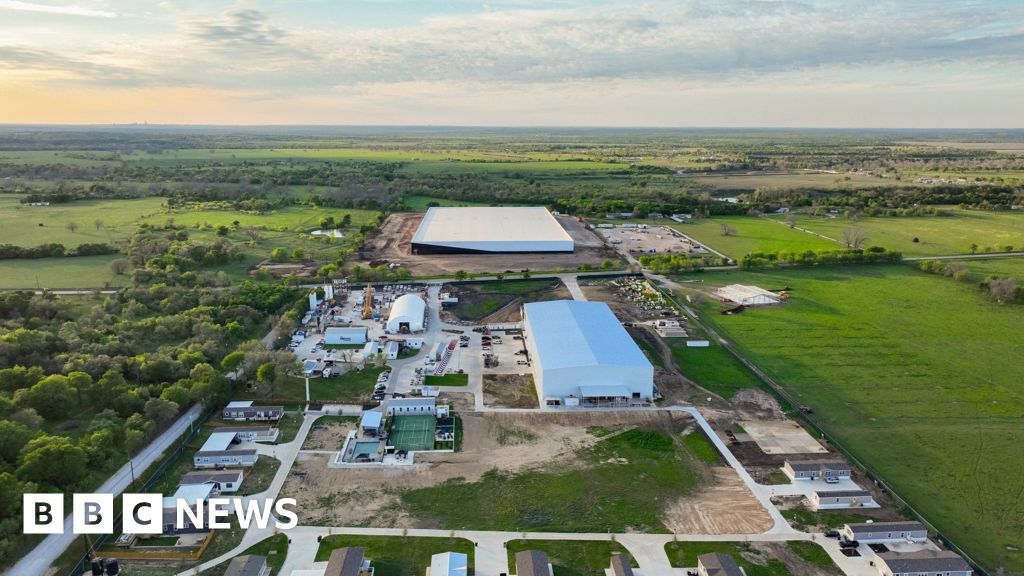ARTICLE AD BOX
By The Visual Journalism Team
BBC News
Thousands of people have been scrambling to flee Afghanistan after the Taliban seized back control of the country, almost two decades after they were ousted by a US-led coalition.
The surge in numbers trying to leave comes on top of the 2.2 million refugees already in neighbouring countries and 3.5 million people left homeless within Afghanistan's borders as a result of ongoing conflict and political instability.
How many Afghans are leaving?
At the moment, it's unclear.
The Taliban control all the main land crossing points with Afghanistan's neighbours (shown on the map below) and the militants have said they do not want Afghans to leave the country. Reports suggest only traders or those with valid travel documents are being allowed to cross.
"The vast majority of Afghans are not able to leave the country through regular channels," a spokesperson for the UN High Commissioner for Refugees (UNHCR) said on Friday. "As of today, those who may be in danger have no clear way out."
However, some refugees have managed to find a way out of the country.
Several thousand Afghans were said to have crossed into Pakistan not long after the Taliban took control of Kabul, while some 1,500 Afghans have reportedly entered Uzbekistan and are living in tents near the border.
In Kabul, thousands of people have been heading to the international airport, currently the only operational one in the country, in a desperate attempt to flee.
On Friday, a Nato official said more than 18,000 people had been flown out of the airport since the Taliban took over, but it's not clear how many of those were Afghan nationals.
How many have fled their homes?
The latest movement of Afghans is part of a historical exodus from a country that has suffered instability and conflict over many years.
Even before the Taliban retook control, more than 550,000 people had been forced to flee their homes this year due to fighting, according to the UNHCR.
That means an estimated 3.5 million Afghans are currently internally displaced within the country.
In addition to those within Afghanistan's borders, about 2.2 million refugees and asylum seekers were also seeking sanctuary in neighbouring nations as of the end of last year.
This year, Afghans have also had to deal with a severe drought and food shortages across most of the country. A report by the UN World Food Programme in June said that 14 million people - more than a third of the population - were suffering from hunger.
Where do Afghan refugees go?
Neighbouring countries Pakistan and Iran saw the highest numbers of Afghanistan's refugees and asylum seekers last year.
Almost 1.5 million fled to Pakistan in 2020, while Iran hosted 780,000, according to UNHCR figures.
Germany was third, with more than 180,000, while Turkey took nearly 130,000.
When looking at asylum seeker numbers only - those who have applied for sanctuary in another country but whose claims have not yet been granted - Turkey, Germany and Greece top the list, with about 125,000, 33,000 and 20,000 respectively.
Although there are no Afghan asylum seekers in Iran, those with refugee cards - an official document recognising their status - are able to access the country's health and education systems.
What are countries doing to help?
While some countries have offered Afghans safe haven, others have indicated they will not be giving sanctuary to those fleeing.
Iran has set up emergency tents for refugees in three of its provinces which border Afghanistan. But senior officials from the Iranian interior ministry have said that any Afghans who crossed into Iran would "once conditions improve, be repatriated". Iran already hosts nearly 3.5 million Afghans, according to the UN.
Prime Minister Imran Khan said in June that his country would seal its border with Afghanistan if the Taliban took control. However, reports say several thousand Afghans have crossed into Pakistan and that at least one border crossing is open. The Taliban are said to be restricting access to traders and those with valid travel documents.
Exact numbers are unclear but reports suggest at least several hundred Afghans, including soldiers from the Afghan National Army, have crossed into Tajikistan in recent days. In July, Tajikistan said it was preparing to take in up to 100,000 refugees from Afghanistan.
About 1,500 Afghans are said to have crossed the Afghanistan-Uzbekistan border and set up camp. Reports suggest the Taliban are only allowing people with valid visas to use official border crossings.
The UK has announced plans to accept 20,000 Afghan refugees over the long term. The British government's Afghan Citizens' Resettlement Scheme will aim to allow 5,000 Afghans to settle in the UK in the first year and will focus on women and children as well as religious and other minorities in greatest danger from the Taliban.
image sourceGetty Images
image captionAfghan families inside a US military aircraft wait for the plane's departure from Kabul airportPresident Joe Biden has authorised $500m (£367m) for "unexpected urgent refugee and migration needs of refugees, victims of conflict, and other persons at risk as a result of the situation in Afghanistan, including applicants for special immigrant visas". The US has not announced an exact number of refugees it will allow in.
Canada has said that it will resettle 20,000 Afghans, focusing on those in danger from the Taliban, including government workers and women leaders.
Australia says it will offer 3,000 places in its humanitarian visa programme to Afghans fleeing their country. But the places will come from the existing programme of available humanitarian visas, and there will be no increase in overall numbers.
Officials in several European Union countries say they are keen to avoid a repeat of the 2015 migrant crisis, when there was a populist backlash to large numbers of refugees being allowed to enter EU territory.
Germany has indicated that it will accept some Afghans, but has not specified numbers. Chancellor Angela Merkel, who faced sharp criticism for her open-door policy towards migrants in 2015, has said that her government was focused on making sure that refugees "have a secure stay in countries neighbouring Afghanistan".
President Emmanuel Macron has said that Europe must "protect itself from significant waves of illegal migrants" from Afghanistan. He said France would "protect those who are in the most danger", but added: "Europe cannot take on the consequences from the current situation alone."
Austria has ruled out taking any Afghan refugees. The country's interior minister has argued in favour of continuing to deport failed Afghan asylum-seekers and has lobbied for the establishment of "deportation centres" in countries neighbouring Afghanistan, where direct deportation to Afghanistan is not possible.
Switzerland has said it will not accept large groups of refugees arriving directly from Afghanistan.
image sourceGetty Images
image captionTurkish security forces patrolling the border with Iran help an exhausted Afghan familyPresident Recep Tayyip Erdogan has said that his government will work with Pakistan to help stabilise Afghanistan and prevent a new wave of refugees heading for Turkey. The government has also stepped up construction of a border wall with Iran to keep migrants out.
North Macedonia, Albania and Kosovo
North Macedonia and Albania have said that they will temporarily host 450 and 300 refugees respectively at the request of the US. The refugees are expected to stay until documentation for US immigration visas can be arranged. Kosovo is also planning to provide temporary shelter for refugees heading to the US but has not specified numbers.
Uganda has agreed to take in 2,000 Afghan refugees. The East African nation has the largest number of refugees in any country in Africa - and the third largest in the world.

 3 years ago
115
3 years ago
115








 English (US) ·
English (US) ·